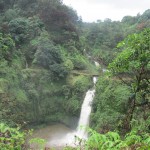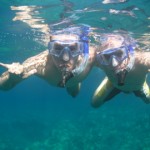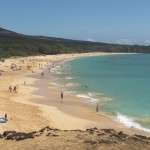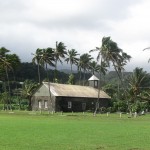Gay Maui Resource Directory
Discover Gay Friendly Maui!
The second largest of the Hawaiian islands, Maui, the ‘Magic Isle,’ has a relatively small population, making it a quiet and peaceful place to live or to visit.
Maui consists of two mountain ranges, massive Haleakala, a dormant shield volcano, in the east, and the West Maui Mountains – actually the remains of an older, extinct volcano – to the west, connected by an isthmus which forms the low-lying central plain. The island is divided into five major regions – West, Central, South, Upcountry, and East Maui.
West Maui comprises Maui’s northwest corner, and features the major resort towns of Lahaina and Kapalua and the famed Ka’anapali Beach and Honalua Bay. Drier than other parts of Maui to the east, West Maui was once a gathering place for Hawaiian royalty, and Lahaina for a time served as the capital of the Kingdom of Hawai’i. It was also a major center of the whaling industry during the 19th century. Now, Lahaina is known most as a tourist destination, her famed Front Street a busy thoroughfare of shops and restaurants, terminating in the Banyan Tree Square at the south end, site of an enormous banyan tree as well as the reconstructed ruins of Lahaina Fort. Ka’anapali Beach, north of Lahaina and Front Street, features Pu’u Keka’a, ‘Black Rock,’ where a torch lighting and cliff diving ceremony is held nightly at the Sheraton Maui to commemorate a feat by the great Maui King Kahekili. Ka’anapali is also the site of ocean side golf courses and Whalers Village, a major open air shopping destination. Nearby Kapalua is also noted for beautiful beaches, resorts, and golf courses; Honalua Bay is a popular surfing and snorkeling location, and during the winter months features enormous waves that test the mettle of the hardiest pro surfers.
Central Maui is the major population center of the island. The county seat, Wailuku, is here, as is the largest population center, Kahului, immediately east of Wailuku. Kahului is the site of Kahului Airport, where the great majority of travelers will arrive on the island. To the west of Wailuku is scenic Iao Valley, once a retreat for the chiefs of Maui, where is located the iconic Iao Needle. Iao Valley was the scene of the great Battle of Kepaniwai between the forces of the Maui kingdom at Hawaiian King Kamehameha I, the ruler who united the Hawaiian islands into the Kingdom of Hawai’i. Wailuku features many historic buildings as well as locally owned shops and restaurants, while Kahului features retails stores and the Maui Arts & Cultural Center.
South Maui is the region along the island’s southwestern coast, including the towns of Kihei, Wailea, and Makena. Like West Maui, it is more dry than other parts of the island, featuring sandy, pleasant beaches, and is also a major resort area, with shopping, restaurants, and golf courses. Beaches here tend to be less crowded than those in Lahaina and Ka`anapali. Particularly well known is Makena Beach State Park, better known as ‘Big Beach,’ 2/3 of a mile of warm golden sand. Just north of Big Beach, across an outcrop of black volcanic rock, is ‘Little Beach,’ famous as both a nude beach and a gay beach. Little Beach features a wide assortment of people (young and old, gay and straight, nude and not quite) and on Sundays often hosts drum circles and fire dancing. Both beaches features warm sand and water, beautiful views of nearby Kaho’olawe Island and Molikini Crater, and are great for surfing, swimming, and snorkeling. Besides Little Beach, Kihei to the north hosts much of the island’s bar scene in the area known locally as the ‘Triangle.’
Upcountry Maui, located along the western slopes of Haleakala Volcano, is a lush, green land of rolling hills and valleys. Farms, ranches, and wineries are to be found here, as is the summit of Haleakala itself, rising 10,023 feet above sea level. In the northern area, near the shore, is the town of Paia and the famed Ho’okipa Beach, windsurfing capital of the world. Paia itself is well known for her shops and eateries, particularly the fresh seafood. Farther up the slopes of Haleakala is the Kula region, a rich farming area where much of Maui’s delicious fresh produce comes from. Check out O’o Farm, the Ali’i Kula Lavender Farm, the Shim Coffee and Protea Farm, and the Kula Botanical Gardens in this area. The town of Makawao, is known for her vibrant art scene as well as for the paniolo – Hawaiian cowboys – who have been a part of Maui’s social fabric since the 1800’s. Take in the Hui No’eau Visual Arts Center while you’re here.
East Maui is a lush region, site of the famed, winding ‘Road to Hana’ along the northeastern coast, as well as the small town of Hana itself. Hana is the site of Pi’ilanihale Heiau, believed to be the largest heiau (ancient Hawaiian temple) in the Hawaiian islands, situated within Kanahu Gardens. There are also a number of gorgeous beaches. South of Hana are the beautiful Pools of Oheo, in Oheo Gulch in the Kiaphulu area of Haleakala National Park. Waterfalls and tropical forests cover East Maui, making the area an amazing getaway for hikers and sightseers. Waterfall-fed pools, at Oheo and throughout the area, offer the adventurous a chance to take a brisk swim in the flowing waters. The waterfalls themselves, such as the 400-foot Waimoku Falls.
The Maui gay community is substantial and accepting. There are numerous LGBT and gay-friendly businesses on the island,exclusive Maui gay resorts and plenty to see, do and experience on this magical island. Maui Gay Pride is a staple event taking place each year around the first weekend in October. Connect with local Maui gay resources on our Community page!
With breathtaking vistas, black sand beaches and lush, tropical gay resorts and spas, “The Valley Isle” is the perfect place to host your gay or lesbian wedding. In 2011, when Hawaii Governor Neil Abercrombie signed legislation legalizing gay marriage in Hawaii, he sealed the State’s fate as one the top gay destinations in the world. We welcome you to plan your Maui gay vacation or wedding below!











